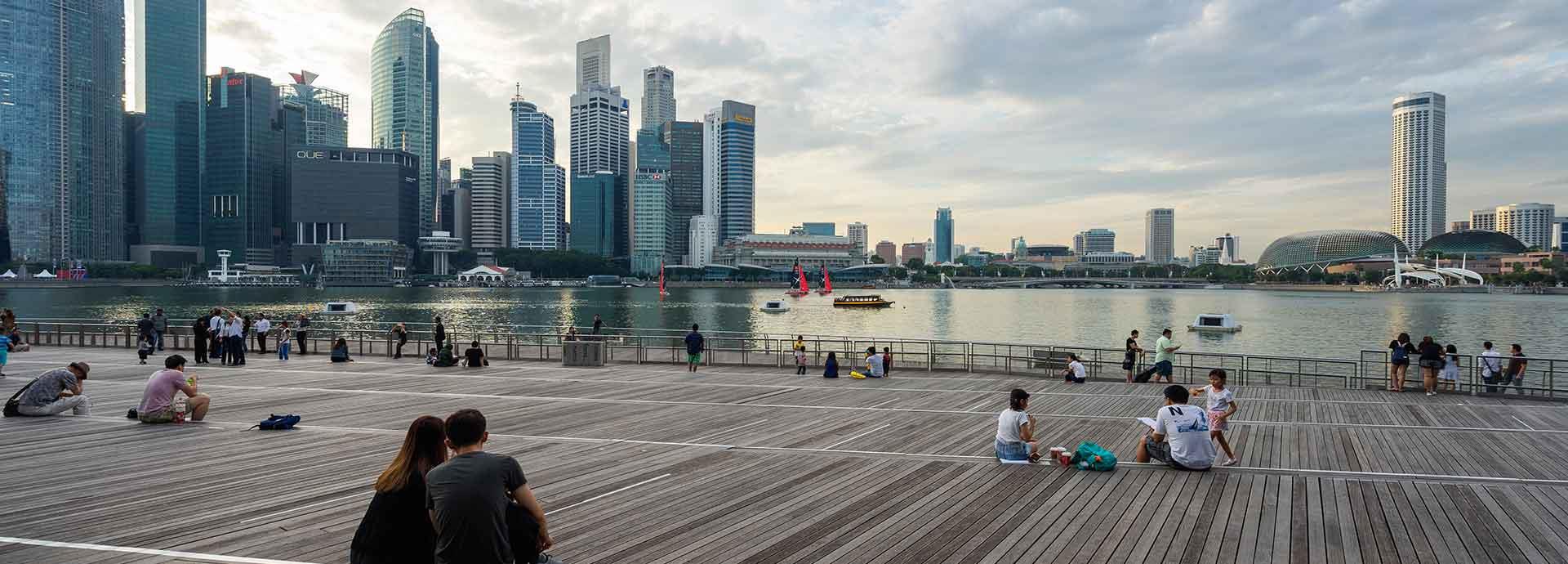

With more than half of the world’s population concentrated in urban areas, governments are eyeing urban resilience strategies to help cities stay strong in the face of extreme weather events and stress on infrastructure.
The cities of Danang, Boston, Rotterdam and Singapore have two things in common. One, they have high rates of urbanisation. Two, they are all actively looking to fortify their cities against systemic stresses and shocks by building urban resilience.
“Urban resilience is many things. In the context of engineering and the built environment, it is the idea of bouncing back quickly, of being hit by a disaster yet being able to return to routine quickly. Then there’s the ecology definition that says resilience is the distance from tipping points and how many hits the system can take before it changes,” explains Kenneth MacClune, CEO & Senior Staff Scientist, ISET international, an organisation helping cities across world in their urban resilience efforts.
The most common types of disasters to affect cities globally and stress infrastructure are floods, droughts and cyclones. The effects of urban heat islands and inequity are other risks to city systems. As of 2014, a United Nations report says that 82% of the world’s cities - accommodating nearly two billion people - are located in areas susceptible to natural disasters. 89% of cities were also at a risk of high economic losses owing to this susceptibility.
Policymakers are on the lookout for solutions to tackle these issues.
The built environment as a canvas
Greg Kats, Chair of a US congressional committee that advises the greening of federal buildings, says the key to developing resilience is by working with the built environment as is.
“By employing smart surfaces like cool roofs, high albedo or porous surfaces and solar PV, cities can employ a cost-effective resilience strategy that brings down the cost of water management, and reduces ambient summer peak temperatures, urban heat islands and the risk of severe flood damage. There are also lower incidences of smog and less respiratory impact,” says Kats.
“The value of a city adopting smart surface strategies today is that they can replace infrastructure at the end of its life and save costs.” he adds.
Singapore, the third most densely populated city in the world, for example, is doing just that. Its low-lying altitude puts it at a risk of coastal flooding, droughts and erosion. It is also vulnerable to extreme heat, poor air quality, and rainfall flooding.
Authorities in Singapore have taken pre-emptive measures to help the city weather these stresses. Since 2014, for example, those who own over 0.2 hectares of land in Singapore must install measures like green roofs, detention tanks and rain gardens to slow down storm water runoff into the public drainage system. The city-state is also addressing the risk of drought by reusing water to meet 40% of its needs. By 2060, water reclamation plants are expected to help it meet 55% of the city’s future demand.
The economic case
In the United States alone, extreme weather-related events since 1980 have cost the economy over 1.5 trillion dollars. It’s no wonder then that ratings agencies like Moody’s are also doubling down on building resilience. It recently announced that a city’s disaster-preparedness, or lack thereof, will be a cause for downgrade.
“One of the structural risks to cities is that their cost of borrowing will go up in the event of a credit downgrade. This means that they could potentially be paying hundreds of millions of dollars more in interest, since the interest charged to them for bond issue rises with a downgrade. Cities now face a choice - they can either adopt these policies or watch their cities experience severe flooding, heat and suffer a credit downgrade at some point,” says Kats.
Meanwhile, when it comes to the benefits of adopting strategies like smart surfaces, analysis has found that the net value of benefits usually outweigh costs involved by anywhere between 33% and 215%.
“The costs are simple and require investment in one place, but benefits show up across departments, for instance - reduced downtime, decreased hospitalizations and insurance costs,” adds Kats.
A rocky route
Yet access to funding for such urban resilience efforts remains a challenge for many cities.
“Climate change is much better understood at a global scale thanks to the UN and international scientists’ backing it. Yet, adaptation is all about the local scale. Since the impact of climate change is going to be felt differently in different cities - it is really a bottom-up process. The challenge is bridging this gap and bringing in a demand-driven solution for climate adaptation finance,” says MacClune.
Experts agree that it will take a combined effort of various stakeholders including the private sector to enable the best of urban resilience in cities.
“It’s a matter of understanding where the profit centres are and where they aren’t. The Government, for example, needs to set the baseline and change policies slowly but steadily so that people can get accustomed to the new rules and adapt. You need to include the full suite of actors, the civil society, NGOs and the private sector, to work across siloed centres of knowledge and overcome institutional inertia,” adds MacClune.